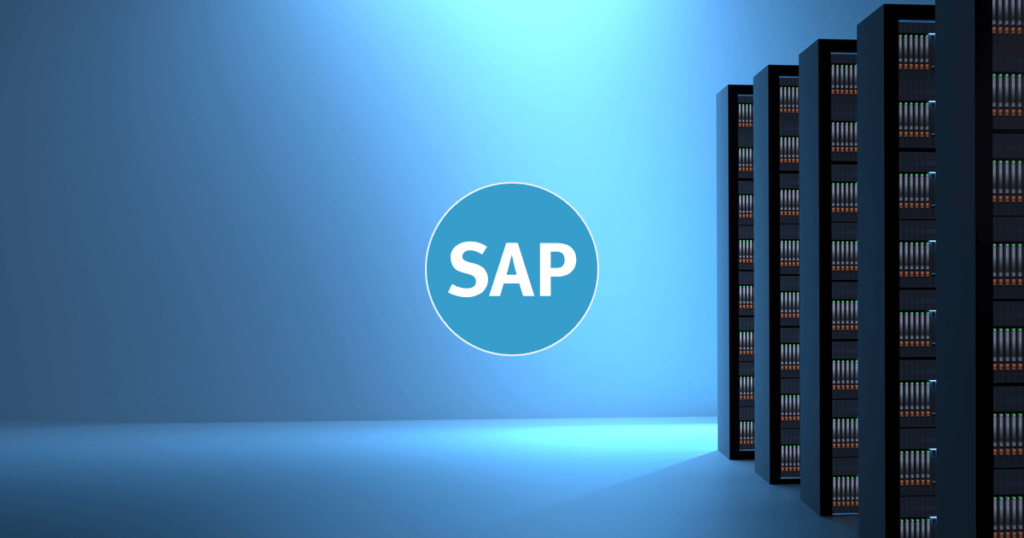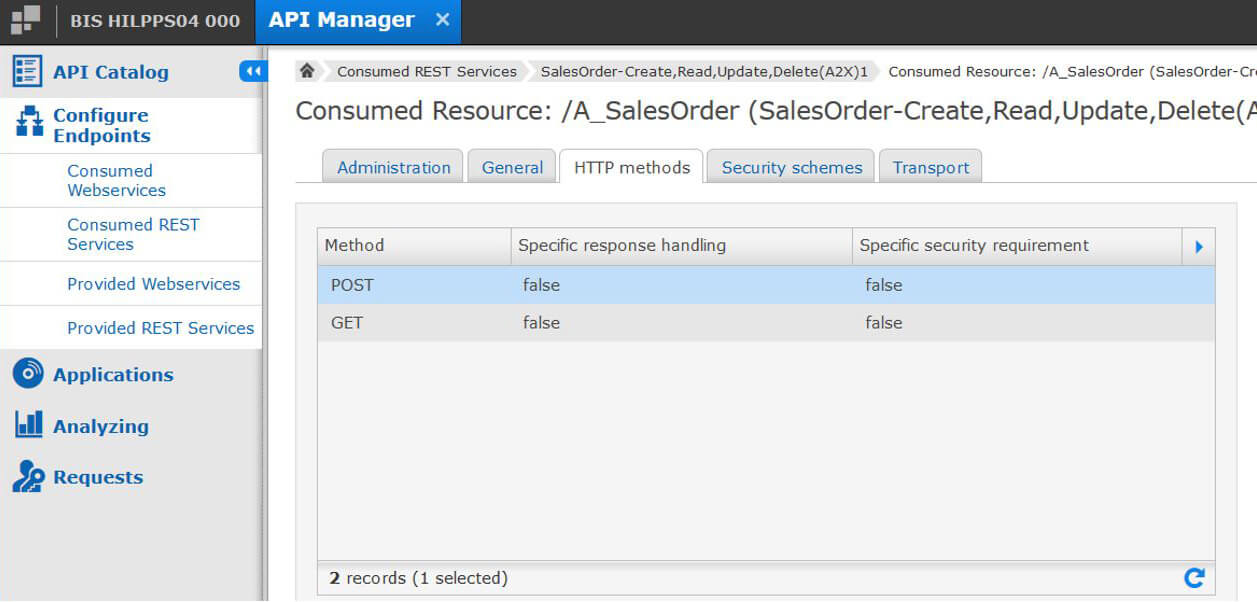
The IDoc structures used for SAP R/3 or ERP ECC continue to be available for connecting SAP S/4HANA. External business partners can be integrated if these IDoc structures are used in conjunction with an EDI solution. SAP also offers API-based interfaces and the SAP API Business Hub eases conversion of the connections from SAP S/4HANA environments to API interfaces – including IDoc-based connections between SAP ERP and the EDI solution.
SEEBURGER customers have complete flexibility in that they can utilize ANY option / variant, negating the need for any additional outlay and thus protecting their investment.
SAP S/4HANA connection to a B2B/EDI solution via SAP API Business Hub
APIs from the SAP API Business Hub can be called by the SEEBURGER Business Integration Suite (BIS) and dynamically routed to proven EDI channels for connecting external business partners. This means that SAP APIs can readily be used today as an alternative to IDocs, for example to transfer orders to SAP ERP that were previously transmitted via EDI.
SAP also provides APIs for the processing of B2B documents, such as incoming purchase orders. The SEEBURGER BIS API solution supports communication with these ERP interfaces:
The WSDL or Swagger API descriptions from the SAP API Business Hub can be imported into the BIS Developer Studio. From there, the SAP APIs can be utilized by SEEBURGER BIS and can be called directly via predefined ‘activities’ within the framework of the ‘Standard Solutions’. The APIs are configured via the SEEBURGER ‘API Manager’, a component of the new, agile SEEBURGER App Framework.
 User Interface of the SEEBURGER API Manager
User Interface of the SEEBURGER API ManagerWhen users of the SEEBURGER Standard Solution and the SEEXML data format move from IDocs to APIs, they only have to make sure that the connection to the SAP backend system and a certain number of process mappings are adjusted. Ordinarily, partner mappings for the respective partner message relationships do not need to be modified. This enables SEEBURGER customers to import APIs from the SAP API Business Hub at any time, test them and start using them seamlessly.
Future of SAP IDocs
Despite these new possibilities, IDocs for the connection between SAP ERP and B2B/EDI solutions may not become obsolete any time soon. Not all transactions required for processing EDI documents are made available as APIs yet – either as part of the SAP standard, individually provided by customers or by SAP Consulting. The SEEBURGER Business Integration Suite offers flexibility with the option of forwarding EDI documents either to the existing interfaces (IDoc/tRFC) or to the new interfaces (API). SAP is expected to extend support for EDI integration via APIs over time. However, it remains to be seen when the new API structures will achieve the full functionality of the current IDocs.
Some APIs are only available as read-only in an on-premises environment, meaning they are not really usable for creating or updating. Version 1809 of the SAP Business Hub offers the first outbound API interfaces for an on-premises installation. Of these outbound APIs, ~60 data entry APIs can be modified and thus used for creation and updating. With this small number of APIs, only a few use cases can currently be covered properly. For comparison: 2,000+ IDoc types have been tested and released since 1995. Compare SAP IDocs with SAP APIs for the example for a connection between SAP ERP and an EDI solution:
| SAP IDocs | SAP APIs | |
| Protocol | tRFC | HTTP/S |
| Call pattern | Asynchronous call | Synchronous call |
| Format | Flat File (in-house) | XML or JSON |
| Typical Payload | EDIFACT or X12 based on standardized interoperability and transaction formats. | JSON (for REST) or XML (for AS4) |
| Standards | Widespread and established standards for industries and regions | No widespread and established standards |
| Error handling | Handling Content Errors in SAP | Handling of content errors on the integration platform |
| Customizing | Z-IDocs in their own namespace | Z-APIs without description in the SAP API Business Hub (The SAP API Business Hub contains descriptions of standard APIs only) |
| Further interfaces | Alternative file port or BAPI interface | SOAP and REST services |
| Deployment Options – SAP | Cloud, on premises | Cloud |
| Deployment Options – SEEBURGER | Cloud, on premises or hybrid (combination of the two previous options) | Cloud, on premises or hybrid (combination of the two previous options) |
Although the new S/4HANA APIs are currently still in an early phase and do not yet cover all use cases, extensions and new APIs are constantly being added. Therefore, their use is expected to increase in the future by companies increasingly using API-based integration functions for new business channels.
What are the benefits of APIs?
With the proven IDoc structure for connecting an EDI solution, the question arises if there is enough added value through such change for just this section of the transmission chain. Externally, transmissions would still be carried out asynchronously via files, whilst internally, individual requests would be processed in near to real-time. The time saved on the internal section of the transmission chain by APIs would be marginal compared to IDocs and thus wouldn’t justify such a change.
Functional added value would be higher if the entire transmission chain between the ERPs’ of the business partners was changed to APIs, rather than purely between the ERP system and B2B/EDI solution. The added value may come from new additional functions for real-time operations, something the asynchronous file exchange over current protocols does not currently offer. This is true of course only if there is a requirement for new additional functions based on real-time operations in this space.
Instead, it seems more reasonable for customers continuing to use the classic methods of exchanging data with their business partners to rely on APIs with their new capabilities for new use cases and channels with real-time requirements. In such cases, API Lifecycle Management can enable rapid adaptation towards changing requirements. APIs simplify the automation or self-service of on-boarding business partners. Furthermore, APIs open up possibilities for the monetization of interfaces and thus for new partner engagements and business models, which were previously not possible in this manner.
A coexistence of the classic B2B/EDI and Managed File Transfer channels with new API channels therefore seems more likely, as a replacement would be uneconomical only for the sake of replacement.
SEEBURGER supports all API interfaces for SAP S/4HANA – and more
SEEBURGER’s BIS platform includes seamless API integration with internal and external business partners via new SAP APIs and proven B2B/EDI or Managed File Transfer channels. This includes the seamless integration of SAP S/4HANA via the SAP API Business Hub. SEEBURGER is thus in a position to provide companies with sustainable support for their digitalization, including electronic invoicing, for each of these scenarios.
Read more about the Integration of SAP S/4HANA
Source: https://blog.seeburger.com/edi-connection-sap-s4hana-with-apis-instead-of-idocs/
 sap-combine.com
sap-combine.com

The time saved on the internal section of the transmission chain by APIs would be marginal compared to IDocs and thus wouldn’t justify such a change.